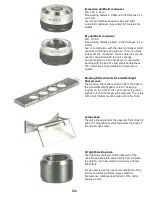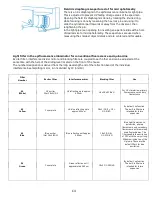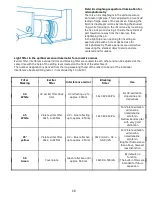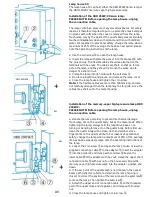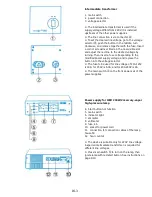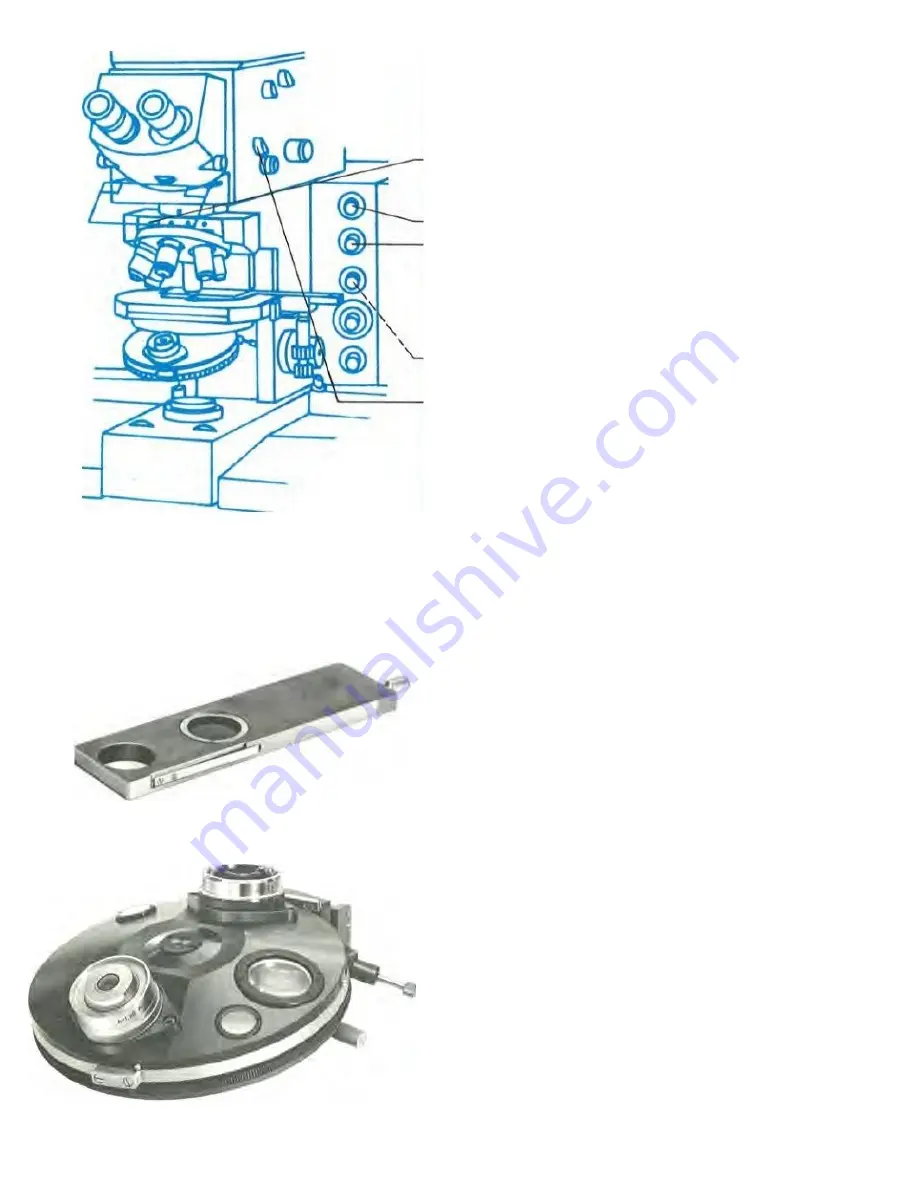
C12
B) epifluorescence
⚪ Turn on HBO 200W mercury-vapor lamp
⚪ Turn off the transmitted-light halogen lamp
⚪ Mount the UV blocking shade
⚫ According to the desired exciter, move slide to interference
beam-splitting mirror 40 to 56 for immunofluorescence (page
C1), aromatic amines (page C5) or conventional fluorescence
(page C3)
⚫ Turn swivel mirror for light from high-performance lamp
⚫ Turn rotary prism for illumination with high-performance
lamp
⚪ With immunofluorescence, swing out the light-pipe filter
opaque plate, and if necessary swivel into place additional color
filters and open the electronic shutter
⚪ Fine focus on the fluorescence image
⚫ Evenly light the field with the collector of the high-
performance lamp
⚫ With weak fluorescent images, divert 100% light to the
oculars (EYE); you may also switch off the relay
⚪ Adjust the field iris diaphragm (in the epifluorescence light-
pipe) using the knurled ring, and sharpen the iris image in the
image plane by loosening hex shaft and sliding fore-and-aft
C) mixed light
⚪ Turn on the halogen lamp so that the epifluorescence image
and the transmitted-light interference contrast image can be
seen at the same time
⚪ To better distinguish between of the two images, you can
rotate in a contrast filter for the halogen lamp
Interference contrast (IC) main prism for
epifluorescence
The interference contrast main prism is inserted from the right
into the fluorescence light path. The front spring retainer must
be pulled out on the optics carrier so that it can engage the
indent in the prism slide. An analyzer is permanently installed
over the main prism. With the edge screw on the device you
can adjust the contrast type, black or colored.
Engaged - IC main prism slid in all the way
Disengaged - IC main prism pulled out to the stop
Interference contrast prisms
The IC prisms are firmly incorporated into the lower turret of the
condenser. They are marked with the objective magnification
and with IC. A unique compensation prism is required for each
objective magnification. A polarizer is firmly fitted under each
compensation prism.
The lower condenser turret contains compensation prisms and
ring apertures for phase contrast, but you can adjust only the
ring apertures with the condenser centering screws. A mistaken
adjustment of the fixed adjusted compensation prisms is not
possible.
Содержание Univar
Страница 1: ...Reichert Univar Manual...
Страница 2: ......
Страница 48: ...D6 blank no content...
Страница 58: ...E2 blank no content...



